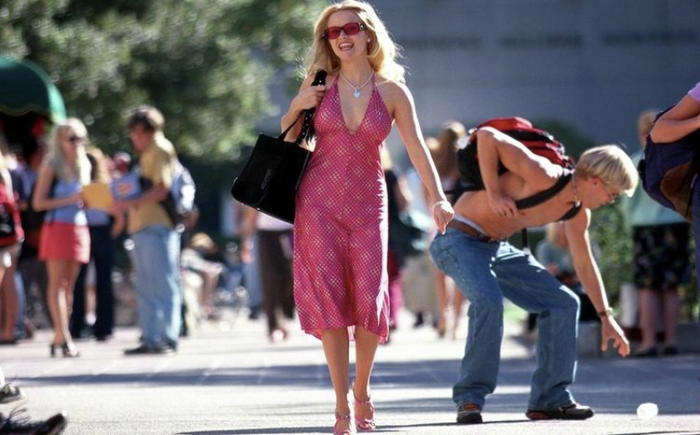The Fashion Legacy of Princess Diana
Fashion Editor Olivia Rhodes explores the celebrated wardrobe of Princess Diana, examining why she is so deserving of her ‘fashion icon’ accolade
In the metaphorical hall of fame of fashion icons, actresses, First Ladies, and singers jostle for attention. However, there is one woman who, appropriately, reigns as queen of them all: Diana Spencer, much-loved Princess of Wales. A bright-eyed 19-year-old was propelled into the spotlight after her engagement to Prince Charles in 1981, and with the new-found attention came the need for a whole new wardrobe. It would not be long before the wardrobe in question became one of the most celebrated in the history of fashion.
“It was the embodiment of the real-life princess fantasy of every little girl who sat rapturously in front of her television”
The watchful eyes of 750 million television viewers of the wedding on 21st July 1981 could not be torn away from the new princess, and the Emanuel-designed dress often dubbed ‘the most closely guarded secret in fashion history’. For a dress so precious and a woman so important, it is no wonder that Elizabeth Emanuel found herself ‘horrified’ to see the bride emerge from her carriage, the skirt covered in creases. However, the record-breaking 25-foot train, huge puff sleeves, antique lace, pearls and sequins could hardly fail to consign the dress to becoming one of the most well-known wedding gowns of all time. It was the embodiment of the real-life princess fantasy of every little girl who sat rapturously in front of her television. Ex-Vanity Fair and Tatler editor Tina Brown reveals ‘she always knew exactly what she was looking for, down to the diamond-studded horseshoe sewn in the waistband for good luck’. It seems that Diana, too, was excited by the prospect of seeing her own fairy tale come to life.
But we all know how that fairy tale ended. After years of strife and tension, the marriage broke down with catastrophic implications, particularly for Diana. But even in the hardest of times, fashion was there to support her. In 1994, a documentary entitled ‘Charles: The Private Man, The Public Role’ aired on ITV in an attempt to portray him more favourably after his separation from Diana in 1991. In the documentary, he admitted to his adultery with Camilla Parker-Bowles. While many a cheated-on wife might have marked the date in her diary to sit on the sofa with a tub of ice cream, Diana did the opposite, arriving at a Vanity Fair party that night in what became known as the ‘revenge dress’. A slinky, off-the-shoulder silk Christina Stambolian piece, paired with tights and stilettos, made her untouchable on the night that could so easily have reopened old wounds. In wearing a dress that Stambolian claims she had previously found ‘too daring’, she showed she had truly moved on, assured in her own identity.
But it is not just princessy taffeta or killer cocktail dresses that mean Diana is so deserving of the accolade of fashion icon. In fact, it is her distinctly less formal wardrobe that continues to influence the style of a generation who are not even old enough to remember her. The collegiate sweatshirt, cycling short, and white trainer combo is one that has found its home in the casual-but-cool repertoire of many an off-duty supermodel, as well as in the wardrobe of many a millennial or Gen-Z. One of the most iconic images of the people’s princess is one that is touchingly informal and intimate, as she sits on the steps of her Gloucestershire home in 1986, stunning in fuchsia gingham trousers. The trend for a statement trouser is very much in full swing, and it seems fashion brands have not forgotten who to pay homage to in the resurgence of this style — this summer, Zara sold an almost identical pair of trousers. The down-to-earth nature generated from the frequency of these casual looks enhance her relatability — if a princess can throw on an oversized sweatshirt and look effortlessly cool, then we can too.
It is undeniable that there is a reinvigoration in the interest towards Diana: her life, her legacy, her fashion. Thanks to the fourth series of blockbuster Netflix series The Crown, and the upcoming biopic Spencer, she is impelled once more into public discourse. The sympathetic light in which she is unfailingly portrayed evokes universal pathos, and a desire to be closer, to comfort, someone whose pleas for help were all too often left unanswered. Perhaps, this desire manifests itself in the interest in her style, because it is where we see the real Diana. Often without the support of a stylist, her outfit choices give us one of the truest insights into who she really was, invited to observe her individual choices that frequently rejected the boundaries surrounding her as a royal. It is where we see real heart: she often chose to wear velvet when visiting children at hospitals so that she would feel warm and soft. Using her fashion to serve others — and herself, as evidenced by the revenge dress — is what makes her a style icon. Her clothes weren’t just something she wore, they conveyed a sense of who she really was, whether that be sporty or vengeful or maternal or glamourous. The way that fashion contributed to this diverse understanding of her as a public figure is an undeniable factor in the establishment of her as a princess loved unfailingly, devotedly, and everlastingly.













